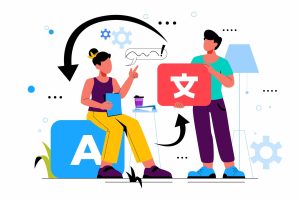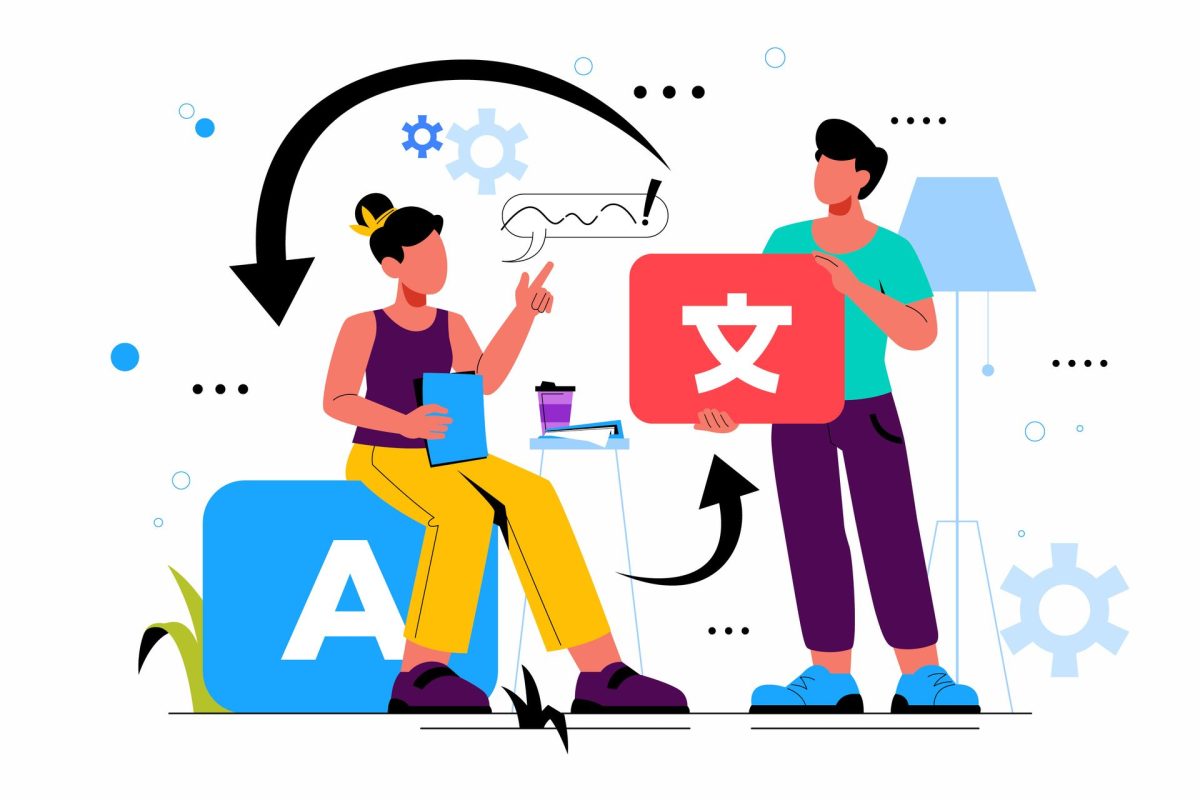Website translation is the process of converting website content into multiple languages to help businesses reach international audiences and expand their global market presence. This comprehensive approach goes beyond simple word-for-word translation, incorporating localization elements that adapt content for cultural context, regional preferences, and local market requirements.
Effective website translation enables businesses to connect authentically with customers who speak different languages, dramatically increasing conversion rates and global growth opportunities.
What this guide covers
This guide covers essential website translation methods, from automated solutions like Google Translate to professional linguists and translation services. You’ll learn implementation strategies, cost considerations, and quality management techniques. This guide does NOT cover general content marketing or basic SEO–it focuses specifically on multilingual website development and management.
Who this is for
This guide is designed for business owners, marketing managers, developers, and entrepreneurs looking to expand internationally. Whether you’re launching your first translated website or improving existing multilingual content, you’ll find actionable strategies for managing translation projects effectively.
Why this matters
Studies show that 75% of consumers prefer buying products in their native language, and websites with high quality translations see conversion rate increases of up to 47% in new markets. Website translation represents one of the most direct paths to global growth, allowing businesses to compete effectively in international markets while building trust with local audiences.
What you’ll learn:
- Core website translation approaches and technologies
- How to choose between automated and professional translation services
- Step-by-step implementation process for multilingual websites
- Common pitfalls and how to avoid costly mistakes
Understanding website translation
Website translation is the systematic process of converting website content from one language into multiple target languages while maintaining functionality, user experience, and cultural appropriateness.
Translation involves converting words and phrases from the source language to the target language, while localization adapts content for specific cultural contexts, including currency formats, date structures, imagery, and regional regulations. Both elements are essential for creating websites that truly speak to international audiences.
Website translation matters for business growth because it removes language barriers that prevent potential customers from engaging with your content, products, or services. When visitors can access information in their native language, they spend more time on your website, trust your brand more readily, and convert at significantly higher rates.
Types of website translation
Machine translation uses automated systems like Google Translate, DeepL, and browser-based tools to instantly convert text from one language to another. These solutions provide immediate translations at scale, making them valuable for basic content comprehension and rapid multilingual content creation.
This connects to overall website translation strategy because automated tools serve as the foundation for many hybrid approaches, providing initial translated content that can be refined through additional services and human expertise.
Professional translation services
Professional translation services employ human translators and professional linguists who bring cultural knowledge, industry expertise, and nuanced understanding to the translation process. These services typically include project management, qa checks, and specialized knowledge in specific domains like legal, medical, or technical content.
Building on machine translation capabilities, professional services become necessary when translation quality directly impacts brand reputation, legal compliance, or customer trust. Human expertise ensures that translated content maintains the intended tone, cultural sensitivity, and accuracy that automated solutions often miss.
Transition: Understanding these fundamental approaches provides the foundation for exploring specific tools and platforms that enable website translation at scale.
Website translation methods and technologies
Modern website translation relies on sophisticated tools and platforms that streamline the translation process while maintaining quality and consistency across multiple languages and content formats.
Machine translation tools
Google Translate offers API integration for real-time website translation, supporting over 100 languages with improving accuracy through neural machine translation technology. DeepL provides higher quality translations for European languages, while Bing Translator integrates seamlessly with Microsoft platforms and Adobe Experience Manager systems.
These automated solutions excel at processing large volumes of content quickly, making them ideal for user-generated content, product descriptions, and frequently updated pages where perfect accuracy is less critical than immediate accessibility.
Translation management systems
Translation management platforms like Lokalise, Crowdin, and Phrase centralize multilingual content workflows, enabling teams to manage translation memories, maintain glossaries, and coordinate between translators, reviewers, and content managers efficiently.
Unlike basic machine translation tools, these platforms offer comprehensive project management features including vendor management, quality assurance workflows, file format support, and integration capabilities with content management systems and development tools.
Website translation plugins
Solutions like Weglot, Transposh, and platform-specific integrations for WordPress and Shopify provide immediate website translation capabilities with minimal technical setup, automatically detecting and translating content while maintaining SEO functionality.
Key points:
- Easy setup requiring little to no manual work or technical expertise
- Automatic handling of hreflang tags and multilingual SEO requirements
- Scalable pricing based on content volume and language needs
- Integration with existing content management workflows
Transition: With these tools and platforms available, the next step involves implementing a structured approach to website translation that ensures quality, consistency, and long-term success.
Implementing website translation: Process and tools
Successful website translation requires careful planning, systematic execution, and ongoing management to maintain quality across all language versions while supporting global growth objectives.
Step-by-step: Website translation implementation
When to use this: This process applies to businesses ready to launch their first multilingual website or improve existing translation workflows with better quality control and management systems.
- Content audit and translation preparation: Analyze existing website content, identify priority pages and languages, and organize linguistic assets including existing translations, brand glossaries, and style guidelines.
- Choose translation method (automated, professional, or hybrid): Evaluate budget, timeline, and quality requirements to determine whether machine translation, professional linguists, or combined approaches best serve your language needs and business objectives.
- Technical setup (subdirectories, subdomains, or separate domains): Configure website architecture for multilingual content, ensuring proper URL structure, server capabilities, and content management system support for multiple languages.
- Translation execution and quality assurance: Execute the translation process using selected tools and services, implementing qa checks, consistency reviews, and cultural adaptation to ensure translated content meets quality standards.
- SEO optimization and hreflang implementation: Configure multilingual SEO elements including localized keywords, meta descriptions, and hreflang tags to ensure search engines properly index and display translated versions.
- Testing and launch preparation: Conduct comprehensive testing across devices, browsers, and user scenarios to verify functionality, translation accuracy, and user experience before launching translated content.
Comparison: Automated vs professional translation
| Feature | Automated translation | Professional translation |
| Cost | Low ($0.02-0.10 per word) | High ($0.15-0.50+ per word) |
| Speed | Instant | Days to weeks |
| Quality | Good for basic content | Excellent with cultural nuance |
| Maintenance | Automated updates | Manual review required |
| SEO Impact | Basic optimization | Advanced localization |
Professional translation provides superior results for marketing content, legal documents, and brand-critical materials, while automated solutions work well for product descriptions, support content, and frequently updated information where speed outweighs perfect accuracy.
Transition: Even with careful planning and quality tools, website translation projects often encounter predictable challenges that can be avoided with proper preparation.
Common challenges and solutions
Website translation projects frequently encounter obstacles related to quality control, technical implementation, and ongoing content management that can significantly impact user experience and business results.
Challenge 1: Poor translation quality hurting brand image
Solution: Implement a quality assurance process combining automated tools with human review, especially for customer-facing content, marketing materials, and legal documents.
Native speakers should review all translated content for cultural appropriateness and brand voice consistency, while translation memories and glossaries ensure terminology consistency across all multilingual content.
Challenge 2: SEO performance loss in translated versions
Solution: Conduct localized keyword research for each target market and implement proper hreflang tags to help search engines understand the relationship between language versions.
Avoid direct keyword translation–instead, research how your target audience actually searches in their language and optimize translated content accordingly, while ensuring technical SEO elements support multilingual site architecture.
Challenge 3: Ongoing translation maintenance and updates
Solution: Choose a translation management system with automated workflow capabilities and integration with your content management platform to streamline updates and maintain translation consistency.
Establish clear processes for handling content updates, ensuring that when source content changes, all language versions receive corresponding updates through systematic workflows rather than manual copy-pasting procedures.
Transition: Successfully addressing these challenges positions businesses to leverage website translation as a sustainable competitive advantage in global markets.
Conclusion and next steps
Website translation represents a critical investment in global growth, enabling businesses to connect authentically with international audiences while building trust through culturally appropriate, high-quality multilingual content.
To get started:
- Audit your current website content and identify priority languages based on target market research and business objectives
- Research your target markets’ cultural preferences, search behaviors, and competitive landscape to inform localization decisions
- Choose appropriate translation methods based on budget constraints, quality requirements, and ongoing maintenance capabilities
Related Topics: Consider exploring international SEO strategies, cultural adaptation frameworks, and ongoing localization management to maximize the effectiveness of your multilingual website investment.
Additional resources
Translation cost calculators: Online tools for estimating project costs across different translation services and content volumes, helping businesses budget effectively for multilingual expansion.
SEO analysis tools: Specialized platforms for monitoring multilingual website performance, tracking keyword rankings across languages, and identifying optimization opportunities in international markets.
Quality assessment frameworks: Standardized approaches for evaluating translation accuracy, cultural appropriateness, and user experience consistency across all language versions of your website.
FAQ: Website translation for global business success
1. What is website translation?
Website translation is the process of converting the content of your website from one language to another so users in different regions can understand and interact with it easily. It involves not only translating words but also adapting cultural nuances, visuals, and local preferences.
2. Why is website translation important for global business?
A translated website helps businesses reach new markets, improve customer trust, and increase conversions. Studies show that users are far more likely to make a purchase or engage with brands in their native language.
3. What’s the difference between translation and localization?
Translation focuses on converting text from one language to another, while localization adapts the entire experience – including currency, imagery, dates, and tone – to make the website feel native to each target market.
4. How can I ensure translation accuracy?
Accuracy depends on using professional translators or specialized tools. Many companies use website translation management platforms like Crowdin, which centralize content, manage workflows, and integrate with CMS systems to maintain translation consistency.
5. Should I use machine translation or human translation?
Both have their benefits. Machine translation (e.g., using AI) is fast and cost-effective, while human translation ensures nuance and quality. The best approach is often a hybrid model, where AI provides the base translation and humans refine the content.
6. What types of websites benefit from translation?
Almost any site – from eCommerce and SaaS platforms to blogs and corporate websites – benefits from translation if the business serves or plans to serve customers in multiple countries.
7. How do I manage multilingual SEO?
Multilingual SEO involves optimizing translated pages for search engines in each language. Use hreflang tags, localized keywords, and separate URLs for each language version to ensure search engines display the correct page to users.
8. What are the challenges of website translation?
Common challenges include maintaining consistent updates, preserving SEO structure, handling dynamic or coded text, and managing multiple versions across CMS platforms. Using automation and localization tools can reduce these issues.
9. How often should I update translated content?
Translations should be updated whenever you add or edit content on your main site. Ideally, your translation system should support continuous localization, meaning updates are automatically flagged and translated in real time.
10. How much does website translation cost?
Costs vary based on word count, language pairs, and whether you use professional translators or automated tools. Many businesses reduce long-term costs with translation memory systems that reuse previously translated phrases.
11. What’s the best platform for website translation?
Tools like Crowdin, Weglot, Smartling, Transifex, and Lokalise are popular. They offer automation, integration with CMS platforms, and real-time collaboration, helping businesses manage translation efficiently and scale globally.
12. How do I choose which languages to translate my website into?
Start with markets that show the most traffic potential or existing customer demand. Use analytics data and market research to prioritize languages that align with your business goals.
VIA: DataConomy.com









